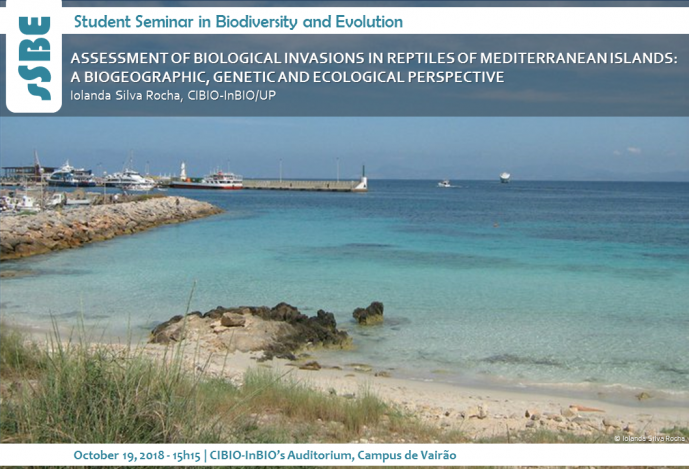ASSESSMENT OF BIOLOGICAL INVASIONS IN REPTILES OF MEDITERRANEAN ISLANDS: A BIOGEOGRAPHIC, GENETIC AND ECOLOGICAL PERSPECTIVE

STUDENT SEMINAR IN BIODIVERSITY AND EVOLUTION

The movement of species across suitable areas occur naturally according to species’ dispersal abilities, but since humans started to explore the world, they also started to translocate species to a place where they could not arrive by their own means, thus reshaping the world’s biota. The Mediterranean basin is the result of a complex history encompassing profound geological processes, climatic shifts, and biogeographical interchanges harbouring one of the world’s biodiversity hotpots. It has been also a meeting point of several civilizations, with a long history of human-biota interaction which makes it a good model to study different layers of biological invasions phenomena. The main aim of this thesis is to determine the patterns and to infer the main drivers of biological invasions on reptiles’ of Mediterranean Islands at different levels, using a combination of biogeographic, ecologic and genetic tools. First, we focused on the broad Mediterranean basin; we combined genetic, distribution and biological data on Mediterranean reptiles together with island information, to identify the factors promoting the presence of alien reptiles on islands, considering human-related, geographic and species traits. Second, we narrowed the study scale to one ‘paradigmatic’ archipelago, the Balearic Islands: here alien reptiles exceed the number of native reptile species and mutliple alien snake species have been recently introduced, endangering the few native species present. We used phylogenetic approaches combined with other information sources (literature and direct observations) to identify the origin and introduction pathways of the four introduced snake species (Hemorrhois hippocrepis, Malpolon monspessulanus, Macroprotodon mauritanicus and Rhinechis scalaris). Third, we focused on the Italian Wall lizard, Podarcis sicula, introduced in several places in the world, from the Mediterranean region to North America, where is frequently invasive and so a good model to understand the history and traits that make a reptile succeed in different systems. Overall, these results provide multiple layers of knowledge about biological invasions on the Mediterranean Islands. All the layers have in common the complexity of the phenomena on this region, by a combination of signals related to a deep human role and the natural adaptation or plasticity of species to the new environments. The integration of several tools to understand different stages of the process allowed a clear but complex picture. The Mediterranean Islands harbour systems with hidden complexity of alien reptiles, which are able to take advantage of their inherited traits and also of the human help, to succeed and expand. Such complexity brought additional questions providing directions for further studies.
Iolanda Silva Rocha holds a MSc in Biodiversity, Genetics and Evolution from the Faculty of Sciences of the University of Porto. Iolanda is currently in the end of her fourth year of the BIODIV PhD Program, working under the supervision of Dr. Miguel A. Carretero (CIBIO-InBIO), Francesco Ficetola (University of Milan) and Daniele Salvi (CIBIO-InBIO) and is part of the Functional Biodiversity (FBIO) group at CIBIO-InBIO. This seminar will be the final presentation of the thesis.
[Host: Miguel A. Carretero, Functional Biodiversity]
Image credits: Iolanda Silva Rocha